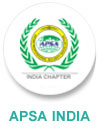Our Clients / Project Sites



























































































 Download Brochure
Download Brochure Download PPT
Download PPT Case Studies
Case Studies
SSA >> Personal Management Solution >> Library Automation & Management System
Library Automation & Management System (LMS)
New technologies have always been of interest for libraries, both for the potential of increasing the quality of service and for improving efficiency of operations. At present libraries of all kinds whether public, research or special libraries are overwhelmingly looking forward to adopt new technologies due to its potential for cost savings in the operations and the management of books and patrons. One such technology which is gaining tremendous popularity among the various libraries is RFID technology since it revolutionizes the way a library operates.
PAIN AREAS:-
Time Consuming Stock Verification Process:-
Often in a library where thousands and lacs of books are involved, manual stock verification becomes a tedious task which may take about 4-5 days to get completed during which the library may have to be shut down for the members leading to inconvenience to them.
Weak Security:-
Especially during peak hours when there is a lot of crowd in the library some students try to move away with the books without issuing it. It is a pain to keep track of such unauthorized movements.
Long queues for book issue and return:-
Manual issue and return of books is a slow process leading to long queues in front of the counter during peak hours. This is a waste of time for the member as well as the library staff who can fruitfully utilize this time for their internal processes.
Tracking a misplaced book:-
It often happens that a book say for example of fiction is wrongly placed in the non – fiction segment or the children's book segment. The patron generally has a tough time locating such misplaced books.
Getting information regarding a particular book:-
Many a times a member may be looking for a particular book but may not have complete information about it.
HOW THE TECHNOLOGY WORKS:-
RFID (Radio Frequency Identification) allows an item, for example a library book, to be tracked and communicated with by radio waves. There are several methods of identification, but the most common is to store a serial number that identifies a person or object, and perhaps other information, on a microchip that is attached to an antenna (the chip and the antenna together are called an RFID transponder or an RFID tag). The antenna enables the chip to transmit the identification information to a reader. The reader converts the radio waves reflected back from the RFID tag into digital information that can then be passed on to computers that can make use of it.

METHOD OF USAGE :-
Every book is pasted with an RFID tag. Tag Id is mapped to book id and its attributes in the database. BENEFITS :- It helps in easy identification of books and also in quick inventory management. |

METHOD OF USAGE :-
The portable handheld reader can be moved along the items on the shelves without touching them. BENEFITS :- It will screen the complete book collection on the shelves thus helping in inventory management. It will help search for a misplaced book. It can also help in locating any particular book requested. |

METHOD OF USAGE :-
Two pedestals with internal RFID sensor. Installed at exit gates. BENEFITS :- It prevents any unauthorized movement of books out of the library thus eliminating theft. |

METHOD OF USAGE :-
TWith an inbuilt RFID sensor, it can sense any product taken near by and can display related information like name of book, author, category of book etc. BENEFITS :- Works as an independent sales personnel giving all product information to customers. Helps you to manage customers in absence of library staff. Patrons can issue or renew the books without the need of the library staff. |
| RFID TAGS | Hand Held Reader | GATE ANTENNA | KIOSK |








